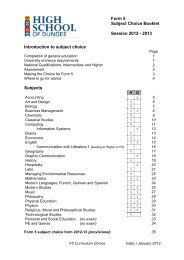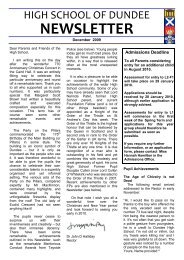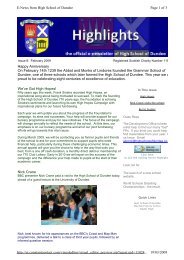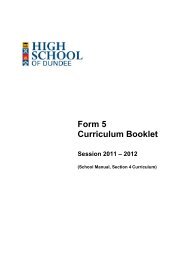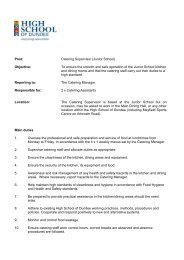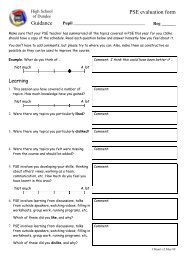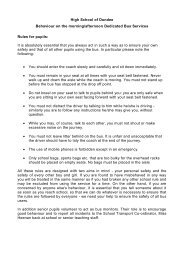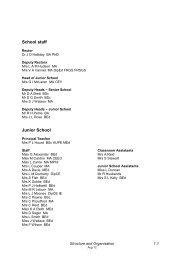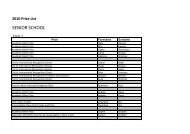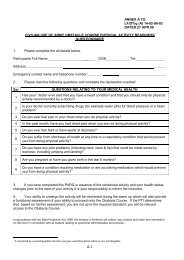F6 front cover June 09 - High School of Dundee
F6 front cover June 09 - High School of Dundee
F6 front cover June 09 - High School of Dundee
You also want an ePaper? Increase the reach of your titles
YUMPU automatically turns print PDFs into web optimized ePapers that Google loves.
<strong>High</strong>er (Computing)OverviewThe course develops concepts introduced in Intermediate 2 courses in a morerigorous and theoretical manner, whilst retaining the practical nature <strong>of</strong> thosecourses.Study <strong>of</strong> <strong>High</strong>er Computing is appropriate for general university entrance, entranceinto computer-based and technical courses, pupils aiming for careers in informationtechnology, and pupils aiming for an Advanced <strong>High</strong>er Computing qualification.PrerequisitesIt is expected that pupils will have an Intermediate 2 Information Systems orComputing qualification, or a Standard Grade Computing Studies pass at Creditlevel.UnitsThis course consists <strong>of</strong> three units. Each unit is completed by passing an internalUnit Assessment and successfully carrying out a series <strong>of</strong> practical tasks.1 Computer SystemsComputer Systems provides an understanding <strong>of</strong> computer components and howthey interoperate. The unit <strong>cover</strong>s the internal structure <strong>of</strong> a computer system andfactors affecting its performance, issues affecting the selection <strong>of</strong> computer hardwareand s<strong>of</strong>tware, and introduces computer networking.2 S<strong>of</strong>tware DevelopmentS<strong>of</strong>tware Development explains the methods and procedures used by computerpr<strong>of</strong>essionals in developing computer s<strong>of</strong>tware for a specific purpose. It looks atpractical issues to do with ensuring requirements are met, and allows real tasks to betaken through from the initial problem specified by a client to the final tested program.3 Computer NetworkingComputer Networking <strong>cover</strong>s the way in which computers may be linked togetherand the benefits and costs involved. Topics dealt with include local and wide-areanetworks, international standards, economic and technical factors, and security andlegal requirements. Practical use <strong>of</strong> networks, including the Internet, is involved.Course assessmentThe overall grade for the course is calculated by combining marks from thecoursework assessment and the final examination:Coursework 30%Final examination 70%Form 6 Subject ChoiceMarch 201217



